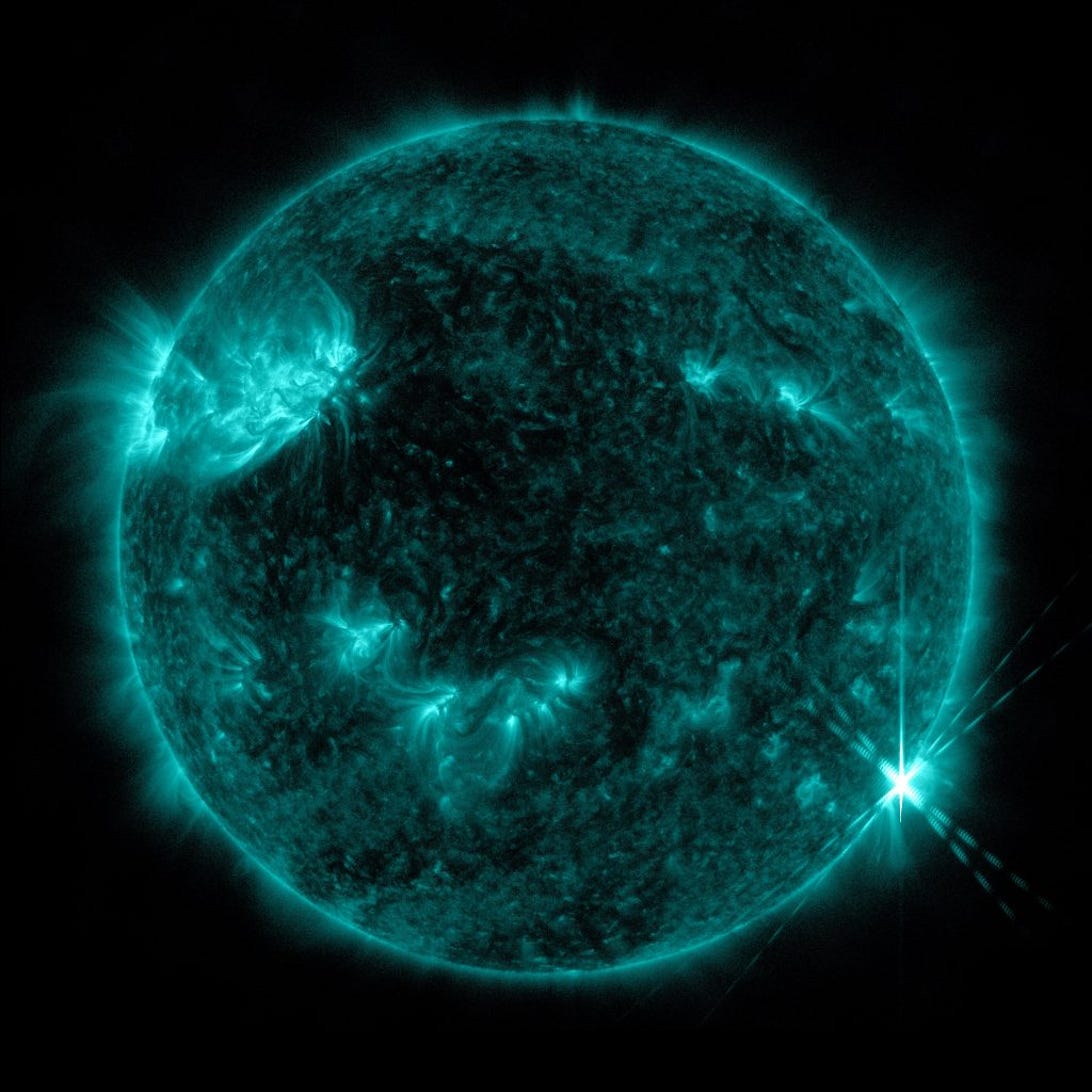The Sun Just Unleashed the Strongest Solar Flare in Almost Five Years

NASA’s Solar Dynamics Observatory captured this image of a solar flare, which can be seen in the lower right.
NASA/SDO
The sun unleashed a powerful side flare this week. The eruption came from a sunspot on the western limb of our local star, and represents the most powerful solar flare seen since 2017.
NASA’s Solar Dynamics Observatory observed the blast at 8:57 p.m. PT on Tuesday, causing a radio blackout for certain shortwave, aviation and other communications centered on Asia.
Today’s X2.2 solar flare is the strongest solar flare of the current Solar Cycle thus far. It peaked at 03:57 UTC and came from sunspot region 2992 which is rounding the western limb. The eruption was fairly impulsive and the resulting CME is not earth-directed. pic.twitter.com/Aq38bXuFnA
— SpaceWeatherLive (@_SpaceWeather_) April 20, 2022
The flare was classified as an X2.2. X-class flares are the strongest category measured by scientists, and higher numbers following the X represent an increase in the power of the eruption. NASA recorded a few X1 flares in the past year, but this is the strongest seen since the sun blasted off a pair of monster X-class flares, including an X9, in the second week of September 2017.
The strongest flare ever observed was in excess of X28, in 2003.
The latest explosion was accompanied by a coronal mass ejection, which is charged plasma that moves slower and can create gorgeous auroras when it collides with Earth’s magnetic field. But because the eruption was located on the side of the sun from the perspective of Earth, those particles weren’t aimed in our direction and won’t be hitting our planet.
The energy emitted by a flare, on the other hand, moves at the speed of light and propagates in all directions throughout the solar system, which is why it caused the radio blackout the same time the flare could be seen.
The big blast is the latest indication our current solar cycle is heating up. Our star goes through regular periods of high sunspot and flare activity roughly every decade or so. We are currently building toward a peak of activity that will come around the middle of the 2020s.
Our magnetosphere prevents the radioactive eruptions from harming life on the surface of Earth, but it does pose a risk to our satellites, communications systems, astronauts in space and even the electrical grid on the ground.
Large-scale blackouts have been caused by flares in recent decades, but this is the first time we’re approaching peak solar activity with thousands of new satellites in orbit. Earlier this year, SpaceX reported that a flare had essentially fried a number of its Starlink satellites.
Read More:The Sun Just Unleashed the Strongest Solar Flare in Almost Five Years
